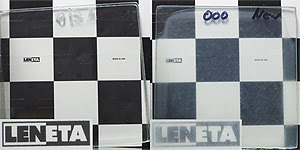By Joshua M. Oliver, Sartomer Co. Inc.
UV curing of polymers is well-known for many applications, including wood coatings, graphic arts, electronics and optics. In the photovoltaics (PV) industry, however, with some notable exceptions, UV curing has not been accepted commercially.
Raw materials and UV-curable formulations previously could not meet the stringent requirements for photovoltaic applications. Now, new development projects by raw materials suppliers, formulators and solar panel producers are resulting in superior-performing UV-curable products for this growing industry.
When many people think of UV-curable formulations, images of hard, scratch-resistant, inflexible and highly cross-linked coatings come to mind. The properties required for new UV markets, such as adhesives, photovoltaics and many electronics applications, have driven raw materials suppliers to develop products that are outside the traditional range of highly cross-linked UV materials.
Low-Tg (glass transition temperature) products with good flexibility and weathering characteristics are especially important for those photovoltaics applications where tests such as freeze/thaw and heat/humidity/freeze are important. These new development projects have identified several families of UV chemistry that can be formulated successfully for these properties.

Shown is a UV-curable material (left) compared with conventional solar EVA encapsulant (right) between glass plates, both after identical exposure to repeated heat/humidity and freeze cycles.
What benefits could there be for adopting a UV-curable process in solar panel production? The photovoltaics industry faces constant pressure to reduce cost per watt, and UV curing provides an avenue to achieve cost reductions. Production time could be greatly reduced – the UV process is an instant-cure, no-postcure, solvent-free process that can be done at hundreds or even thousands of linear feet per minute. In addition, the energy needed to process is much lower than conventional heat-cure systems. Compared to the first-generation photovoltaic panels using a heat-lamination step that can take 15 to 45 min, the UV process is much faster and cheaper.
Performance properties also can be improved with a UV-curable formulation. New raw materials and formulations exhibit much better moisture vapor barrier properties than materials such as ethylene vinyl acetate (EVA). Hardness, flexibility, adhesion, toughness and weatherability all can be tailored by formulation techniques and the selection of raw materials.
New products also are taking aim at extreme exterior weatherability and freeze/thaw/humidity performance. Adhesion to glass, plastics, metals and other substrates can be achieved and maintained through stringent testing such as 85 °C/85 percent relative humidity. Better-performing components can extend the life cycle of solar panels and possibly enable simpler designs by eliminating some protective components such as edge seals in first-generation panels.
The UV cure process benefits second- and third-generation panel makers in particular. With new production lines being set up that can closely mirror a printing process, UV curing is a fast, efficient and effective method for processing adhesives, coatings, dielectrics and even conductive silver pastes. In addition, the UV curing station’s footprint is small compared with that of thermal ovens. As many second- and third-generation panels are constructed by layering a “sandwich,” the instant-cure and no-postcure aspects of UV curing mean that articles are ready for use, shipping or further processing immediately.
Because of its many benefits, UV curing has long been perceived as the green technology choice for coatings. Isn’t it fitting that the green energy industry could soon be putting its advantages to use?
Meet the author
Joshua M. Oliver is manager of UV specialty applications at Sartomer Co. Inc. in Exton, Pa.; e-mail: [email protected].
Also see: More Web Exclusives